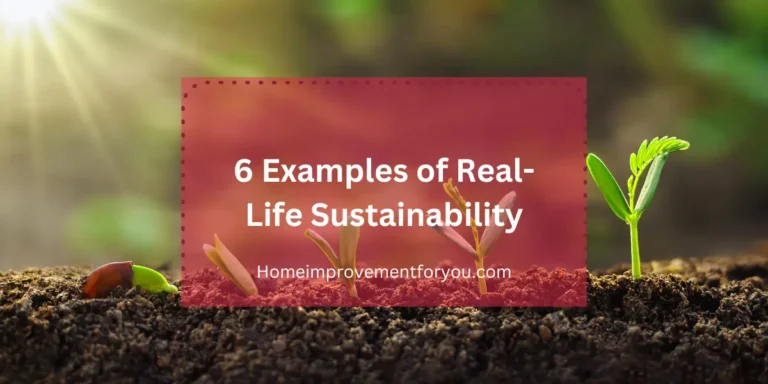Incorporating sustainable practices into daily life can seem overwhelming, but it doesn’t have to be. By making small, actionable changes, you can significantly reduce your environmental footprint without compromising on practicality. Here are six real-life examples to inspire your journey toward a greener lifestyle:
1. Switch to Energy-Efficient Lighting
Transitioning to energy-efficient lightbulbs like CFLs or LEDs is a simple yet impactful step. These bulbs use up to 75% less energy and last significantly longer than traditional incandescent bulbs.
- Why it works:
Energy-efficient lighting reduces greenhouse gas emissions and lowers your electricity bill. For instance, replacing just one incandescent bulb with an LED can save approximately $50 over the bulb’s lifetime.
2. Optimize Dishwasher Use
Contrary to popular belief, using a dishwasher can be more sustainable than washing dishes by hand. Modern dishwashers use as little as 4 gallons of water per cycle, while handwashing can consume up to 20 gallons.
- Pro Tip: Always run your dishwasher with a full load, and use eco-friendly detergent for added sustainability.
3. Choose Cold Water for Laundry
Washing clothes in cold water can save up to 90% of the energy typically used during a hot water wash. This small adjustment also helps preserve fabric quality, extending the lifespan of your garments.
- Added benefit: Cold water settings are gentler on colors, preventing fading and keeping clothes looking new for longer.
4. Go Native with Landscaping
Planting native species in your garden reduces the need for excessive watering, fertilizers, and pesticides. These plants thrive naturally in your local climate and soil, promoting biodiversity by supporting local wildlife.
- Eco-Impact: Native plants require less maintenance, saving resources like water and energy while reducing garden waste.
5. Replace Disposable Items with Reusables
Ditch single-use items in favor of reusable alternatives. Start small by switching to reusable grocery bags, water bottles, and coffee mugs.
- Examples of easy swaps:
- Use glass or stainless steel water bottles instead of plastic ones.
- Bring your own shopping bags to eliminate plastic waste.
- Invest in cloth napkins and rags to reduce paper towel use.
6. Reduce Junk Mail
Unwanted mail is not only a nuisance but also a source of paper waste. Opt out of junk mail by registering on platforms like DMAChoice.org to control the types of mail you receive.
- Why it matters: Reducing paper waste helps conserve trees, water, and energy used in the production and disposal of unwanted materials.
Takeaway
Sustainability doesn’t have to mean drastic lifestyle changes or costly investments. Small steps, like switching to energy-efficient lighting or using a dishwasher wisely, can lead to significant environmental benefits. Start with what feels manageable, and gradually incorporate more sustainable habits into your daily routine.
Which of these ideas will you try first? Share your thoughts below!

